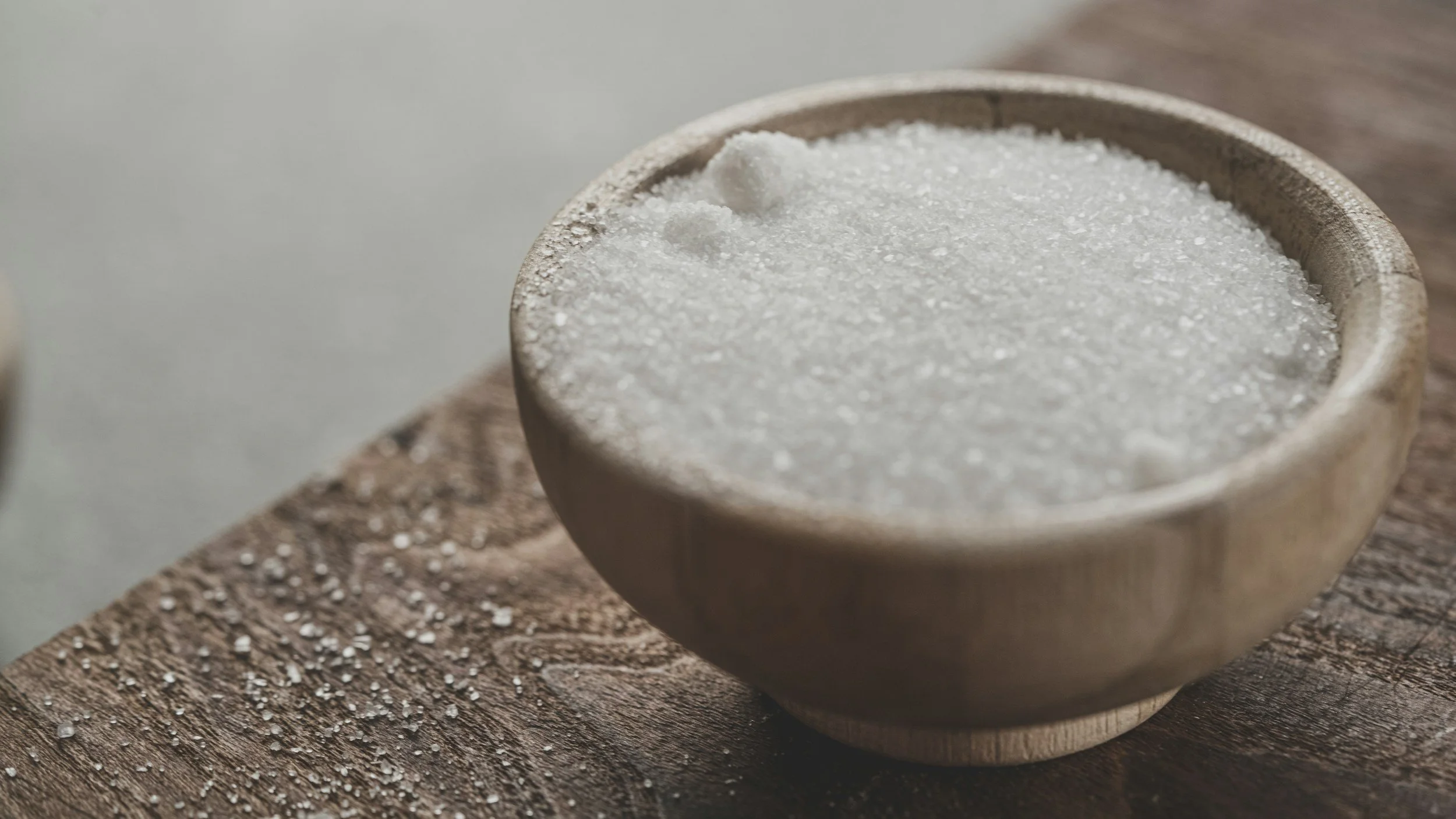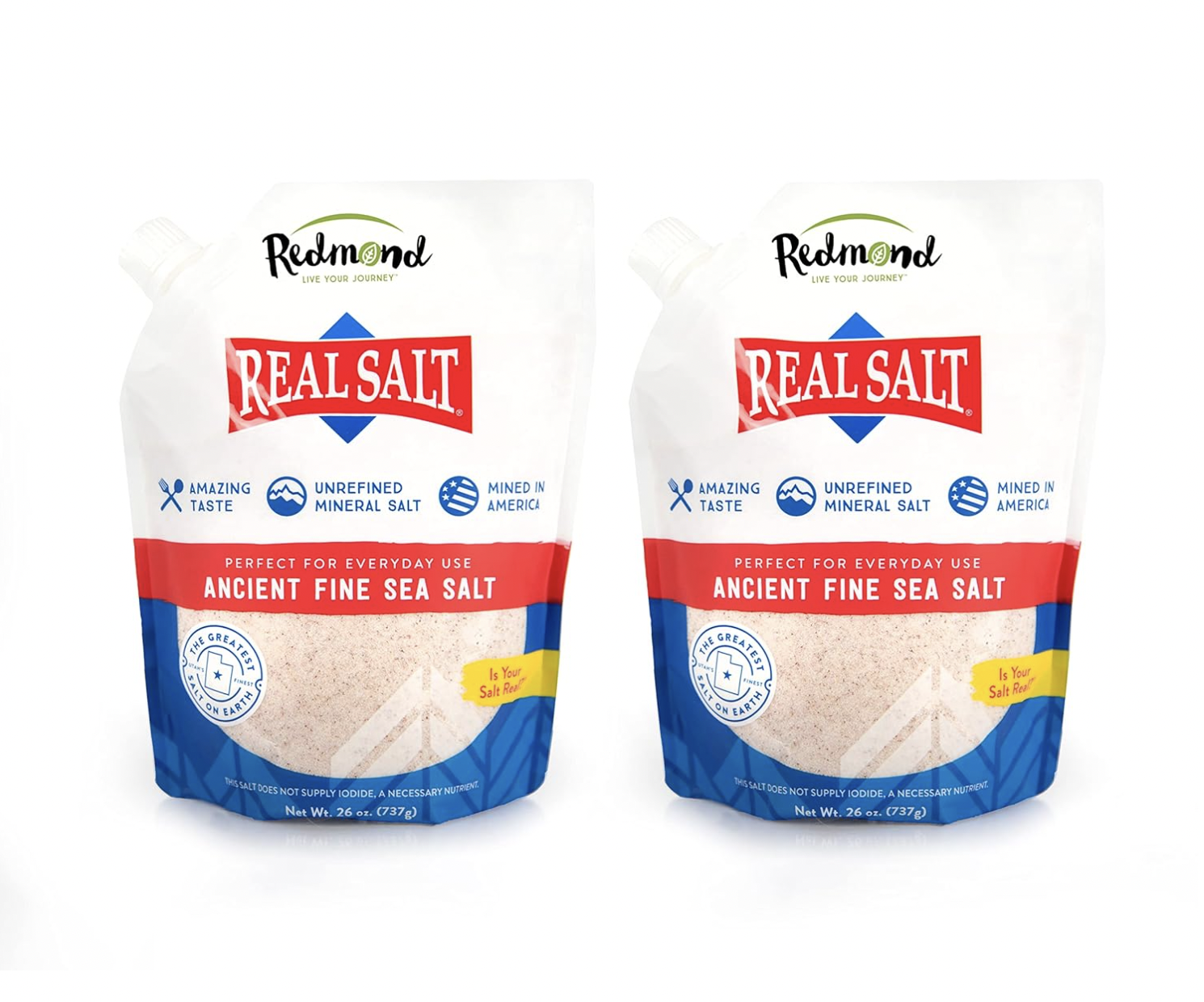The Truth on Salt: Not All Salt Is Equal
Not All Salt Is Equal: Where and How It’s Sourced Matters
The TSA Agent in the airport put me in holding and called Homeland Security because my carry-on bag set off the bomb detector. The TSA Agent said that my bag tested positive for “explosive material.” I thought it was a joke orchestrated by my father.
I stood in the airport stunned, and my family was speechless. After a tense wait and a surprising conversation with the TSA agent, I learned that my small container of pink Himalayan salt was the culprit. I carry salt with me, so I can add a pinch of it to my water to boost my hydration (more on those benefits later).
The TSA Agent told me that this happens regularly, and because of that, he conducted a little research. He learned that pink Himalayan salt is mined with explosives to break up the large slabs of salt, and explosive residue remains in the salt. He recommended I conduct my own research and change the type of salt I use to a specific brand. After I researched, I agree with his brand recommendation.
I never imagined that salt would set off bomb detectors in an airport, and I walked away with a mission to dig deeper into the world of salt — how it's harvested, what's hiding in it, and which types support our health.
I'm sharing my findings with you now.
Some Salt Might Be Harming Your Health More Than Helping It.
Salt: one of the most common ingredients in every kitchen, yet one of the most misunderstood.
While we all need salt for hydration, energy, and cellular health, the type of salt we choose makes a world of difference. Some salts are rich in healing minerals, while others contain toxic contaminants due to their harvesting methods.
The Breakdown:
I’m going to break down the four types of salt, where they come from, how they’re harvested, what’s in them, what to avoid, and what I recommend based on my findings so you can make the best choice for your health.
1. Sea Salt
Where and How It’s Harvested: Seawater is channeled into shallow pools and allowed to evaporate under the sun, leaving salt crystals behind.
Popular Brands: Celtic, Maldon, Fleur de Sel.
Concerns:
Microplastics: Ocean pollution has infiltrated our salt shakers. Sea salts often contain microplastic particles. These tiny plastic particles accumulate in the body over time and are linked to inflammation, hormonal disruption, and long-term toxicity.
Environmental Contaminants: Oil spills, mercury, heavy metals, and industrial waste make their way into the ocean - and ultimately into your salt. Even "clean" sea salts can't fully escape contamination. One study found that even Maldon and Celtic sea salts, often praised for purity, contained low levels of microplastics.
Processing: Some sea salts are bleached or treated; others are minimally processed.
Pros: Natural evaporation process, wonderful trace minerals are present if it’s unrefined.
2. Salt Bed Salt (Ancient Inland Salt)
Where and How It’s Harvested: Found in prehistoric seabeds that dried up millions of years ago and are now buried deep under protective layers of earth. This salt is hand harvested and uses machinery.
Best Brand: Redmond Real Salt (Utah, USA)
Concerns: none
Pros:
No Microplastics: Formed long before ocean pollution existed.
Radiation Free: Mined 700+ feet underground, far from former nuclear test sites. Redmond conducts routine Geiger counter scans and detects no radiation.
No Explosives Used: Harvested by hand, no explosives, no chemical contamination, preserving purity.
Mineral-Rich: Contains over 60 naturally occurring trace minerals.
Naturally Delicious: Has a clean, slightly sweet flavor.
3. Mined Rock Salt
Where and How It’s Harvested: Extracted from large underground rock salt mountains using blasting with explosives. This is still considered ‘sea salt’ because sea water travels in underground channels to the rock salt mountains.
Example: Khewra Salt Mine (Punjab, Pakistan) — Pink Himalayan Salt. This mine is the source of most pink Himalayan salt.
Concerns:
Explosive Residue: Often mined using dynamite and other blasting methods, leaving behind explosive residue in the salt. Can leave chemical traces of explosive material.
It sets off Airport Security Alarms: It’s common; my story isn’t rare. It’s known to set off bomb detectors due to the explosive residues.
Microplastics: contains microplastic particles. These tiny plastic particles accumulate in the body over time and are linked to inflammation, hormonal disruption, and long-term toxicity.
Environmental Contaminants: Oil spills, mercury, heavy metals, and industrial waste make their way into the ocean - and ultimately into your salt. Even "clean" sea salts can't fully escape contamination. One study found that even Maldon and Celtic sea salts, often praised for purity, contained low levels of microplastics.
Not as Pure as It Seems—Marketing vs. Reality: This mine offers lower transparency on its mining method and testing for contaminants or heavy metals. The mineral profile is stellar, but the mining method and contaminant level make this salt a no-go for me. It’s often considered “pure” but seems to be compromised during extraction.
Pros: wonderful trace minerals are present
4. Refined Table Salt
How It’s Made: Typically extracted from underground salt mines and heavily refined.
Example: Morton’s and most other commercial table salts.
Concerns and Why You Should Skip Table Salt:
Stripped of Minerals: only sodium and chloride remain.
Enriched with synthetic iodine, which is not typically bioavailable. More chemical than mineral.
Contains Anti-Caking Additives: Includes anti-caking agents (often aluminum-based).
Often bleached.
Linked to Inflammation, disrupts fluid balance, and contributes to systemic inflammation.
Abrasive cleaning power — Salt's crystalline structure and grainy texture make it a gentle abrasive, allowing you to scrub away dirt, grime, and even some rust without damaging surfaces. It's particularly effective for cleaning things like cast iron pans, glass coffee pots, or removing tough stains from mug
Pros:
Abrasive cleaning power — Salt's crystalline structure and grainy texture make it a gentle abrasive, allowing you to scrub away dirt, grime, and even some rust without damaging surfaces. It's particularly effective for cleaning things like cast iron pans, glass coffee pots, or removing tough stains from mug.
Stain removal — Salt can be surprisingly effective in tackling stains, especially when they're fresh. For example, it can help absorb grease spills from carpets or clothing and lift wine stains from fabric if applied immediately. To remove sweat stains, a paste made of salt and water can be applied to the affected area before washing.
Deodorizing and Freshening — Salt's natural absorbent properties help neutralize odors and leave fabrics smelling fresher. Sprinkle salt on carpets before vacuuming to eliminate odors and freshen them up. It can also be used to remove unpleasant smells from things like sneakers or cutting boards
Why Redmond Real Salt (from Utah) Wins My Vote (and the vote of the TSA Agent):
Redmond’s is harvested from a pristine, ancient, underground seabed in Utah — untouched by modern pollutants. It’s been sealed beneath hundreds of feet of clay and earth for millions of years, protecting it from modern-day pollutants and microplastics. It’s hand-harvested, meaning no explosives are used.
What sets it apart:
Clean (No Microplastics)
Hand-Harvested (No Explosives)
Radiation Free (routinely tested)
Rich in 60+ Trace Minerals
Delicious
Final Thoughts
Salt plays a vital role in health: supporting hydration, nervous system function, electrolyte balance, and energy production. But it only works for you when it’s free of modern-day contaminants.
If you're going to sprinkle something on your food every day, make sure it’s helping you — not harming you.
Switch to a salt you can trust. Redmond Real Salt is my choice — and I hope it becomes yours, too. You can purchase it HERE.
Your body will thank you.
Some links are Amazon and other affiliate links, so I may earn a small commission—at no extra cost to you.
MORE ARTICLES. . .







Lean In, Have Courage — Discover the transformative power of "leaning in," taking action in the face of fear, and finding your voice in this inspiring journey of personal growth from America's Health Coach, Jennifer Price.